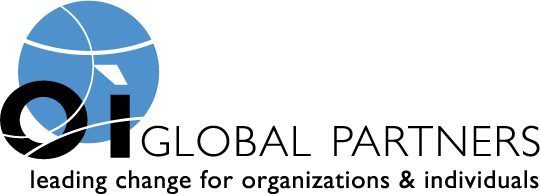When was the last time that you said, “Wow that was a great meeting! I can’t wait until the next one!”?
 I frequently hear that the most de-energizing part of people’s day is their time in meetings. What would it take to improve those parts of the day?
I frequently hear that the most de-energizing part of people’s day is their time in meetings. What would it take to improve those parts of the day?
There are ultimately three reasons to have meetings:
- Share information
- Make decisions
- Coordinate activities
If you are suffering from too many meetings or not enough of the right kind of meetings, I suggest the following five ways to improve them:
- Be Intentional. Be clear about why you are meeting. What do we want to accomplish? Who needs to be at the meeting? What decisions need to be made? Have an agenda. Everyone should know why they are there and what their role is. Cancel the meeting if you don’t have anything to talk about.
I know leaders who fill their days with meetings so they feel important and involved. A good day for them is staying busy by being included in many meetings. Others shudder at that thought, believing that a day without meetings ranks among the most productive. Which track do you follow and how does that track impact your productivity and energy? - Be Respectful. Value each other’s time. A colleague told me of a new employee coming to a meeting, asking, “Why are we here?” with an expectant and urgent tone in his voice. The employee grew up in a Silicon Valley startup where speed was valued and meetings were a distraction to production. The meeting leader, who had many years with a traditional company, took offense to the question that his meeting was not seen as important.
The question was a great one to ask – it is important, however, to know your audience and be respectful of the participants. Get to the point of the meeting quickly. - Be Present. How do you create focus in your meetings? How important is it for participants to stay on task for the meeting? If your mind is filled with distractions prior to the meeting, clear them before starting the meeting. Defer off topic matters to another venue. Be clear about what is acceptable meeting behavior related to usage of laptops and smart phones. If you aren’t going to actively participate, send a proxy to the meeting to represent you. If you are at the meeting, contribute to the meeting. Believe it or not, you are being rated on your participation. It’s not just about the meeting, but also about how we show up at the meeting.
In Harvard Business Review’s famous article, “Beware the Busy Manager,” it was noted that our most productive quadrant is when we are both focused and energized. Only 10% of the work population fits this profile. The other quadrants are disengaged (20%), distracted (low focus and high energy – 40%), or procrastinating (low focus and low energy – 30%). Can the same criteria be said of meetings? How often do we meet and not make decisions, i.e. procrastinate? How often do our meetings creep on scope, instead of executing solely on the purpose of the meeting (distracted)? How often are we at the meeting, but our energy is elsewhere and we don’t care about the outcome (disengaged)? - Document Action Items. I worked for an organization that didn’t do this as standard practice. Additional meetings would then be scheduled due to lack of documentation, including flurries of emails seeking clarity on what was decided upon. To get the most from meetings, manage your action items so people know what is expected of them as a result of the meeting.
- Leverage the Opportunity. If you are required to go to a meeting and you don’t believe it will have value, take it upon yourself to create value. Deepen a relationship with a colleague through discussion. Discover relevance in the meeting agenda and topics. I challenge my clients to know what they want to get out of the meeting and to find wins for everyone involved before they even step into the conference room. Patrick Lencioni, in his book, Death by Meeting, points out that good meetings involve nurturing a natural level of conflict; otherwise they are boring and people check out. Be courageous and try diving into a topic that involves conflict, resolve it, and make the team and company better and stronger. Are your meetings conflict-averse or conflict-ready?
Meetings can be a productive, results oriented activity if structured appropriately with pinpoint focus and intention. What can you do to make your next meeting a great one?
Need help implementing a good meeting strategy within your organization? Contact OI Global Partners today.
Evan Roth is a Certified Executive Coach, Energy Leadership Index Master Practitioner, and Chief Learning Officer at Nelnet, Inc. He enjoys helping people thrive in the corporate world. You can find him at CoachEvanRoth.com.
Share this post:

Comments are closed